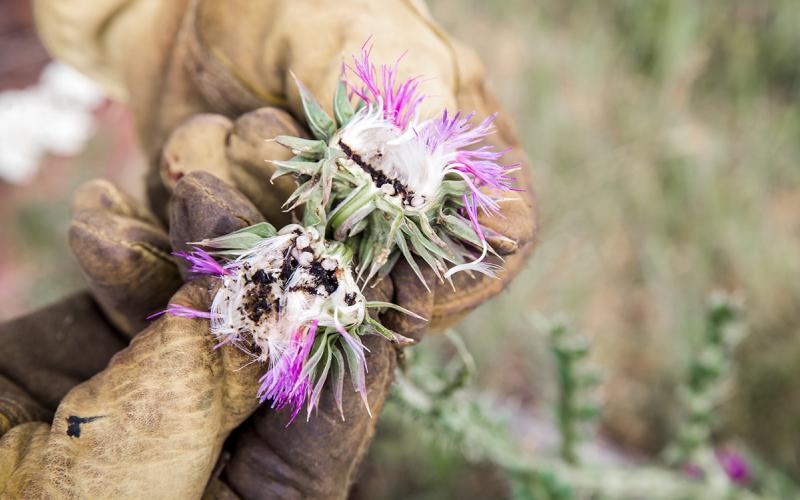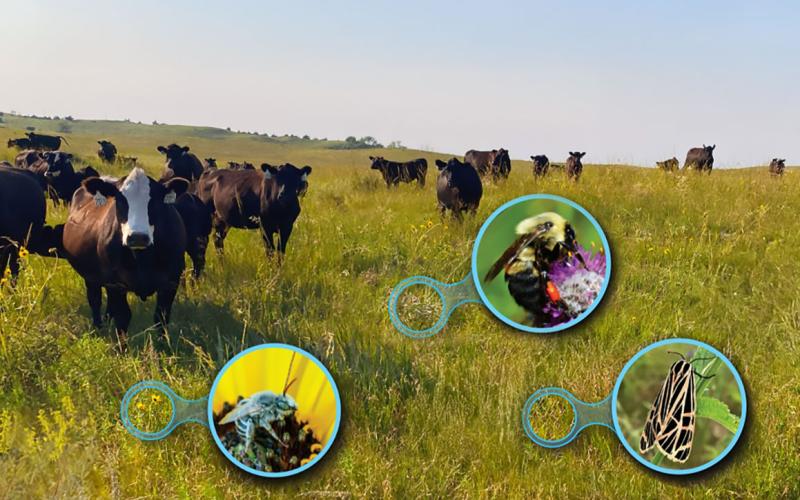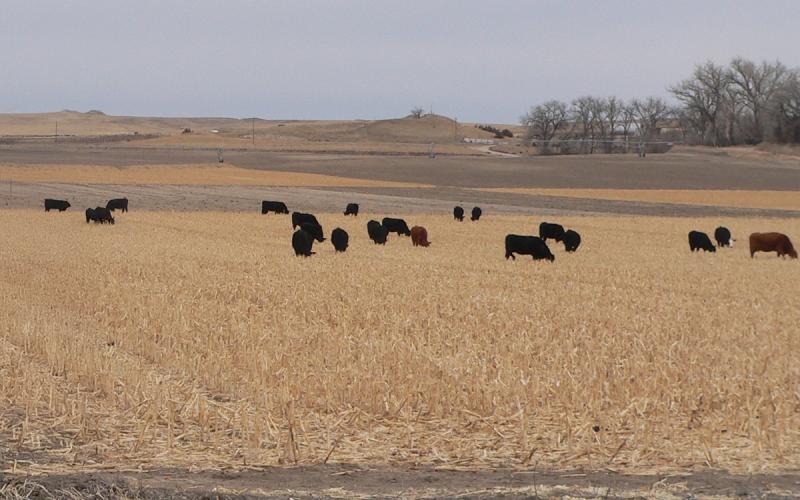What Are the Current Drought Conditions?
As compared to a year ago, the 2025 growing season has brought significant improvements to previously very dry Northern Great Plains (Figure 1). Recent fall rains across the region continue to improve soil moisture conditions in preparation for the dormant season and freezing temperatures. Unlike in years past, a fall green up has been in full swing for much of the region.
The 4-week Evaporative Demand Drought Index (abbreviated as EDDI) ending October 10, 2025 is notable, because it shows the abnormally wet impact of abundant precipitation in western South Dakota (Figure 2). But it also indicates some potential drying out in the eastern part of the state. Evaporative demand essentially refers to the “thirst of the landscape” based on both precipitation and temperature. This map is used to indicate the potential for drought conditions to emerge.
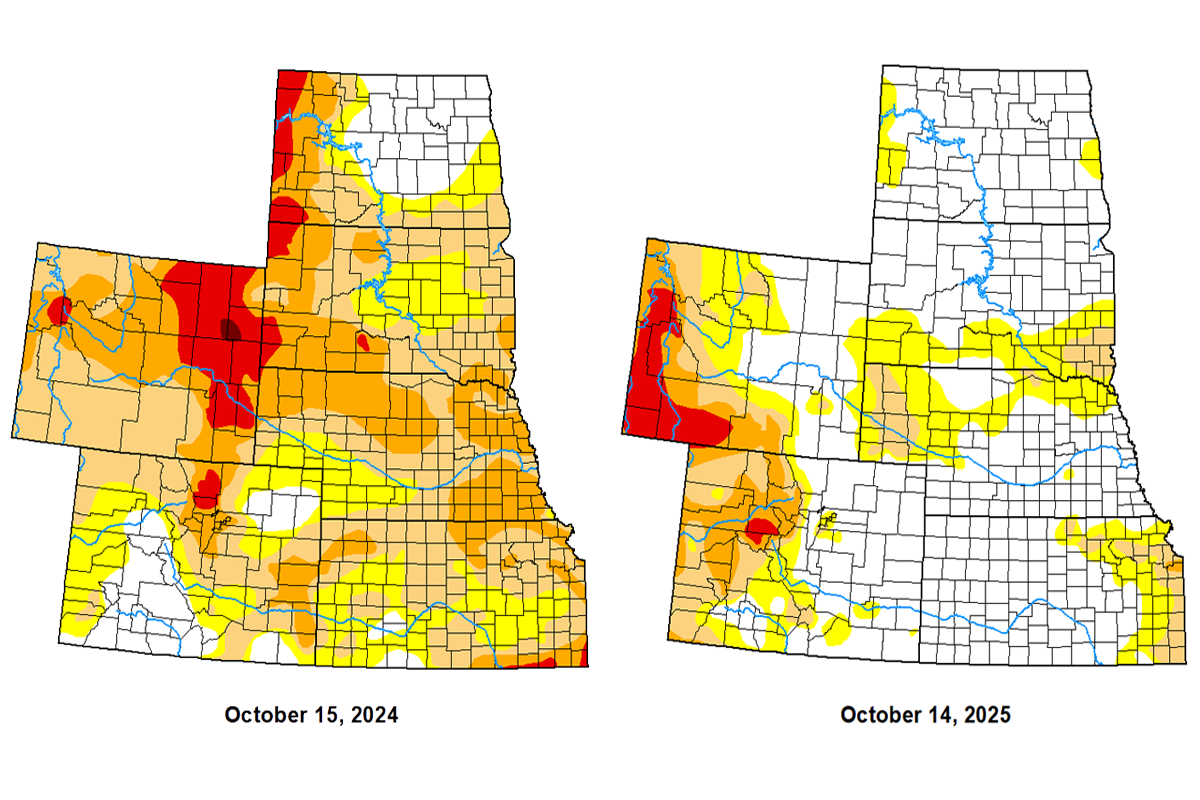
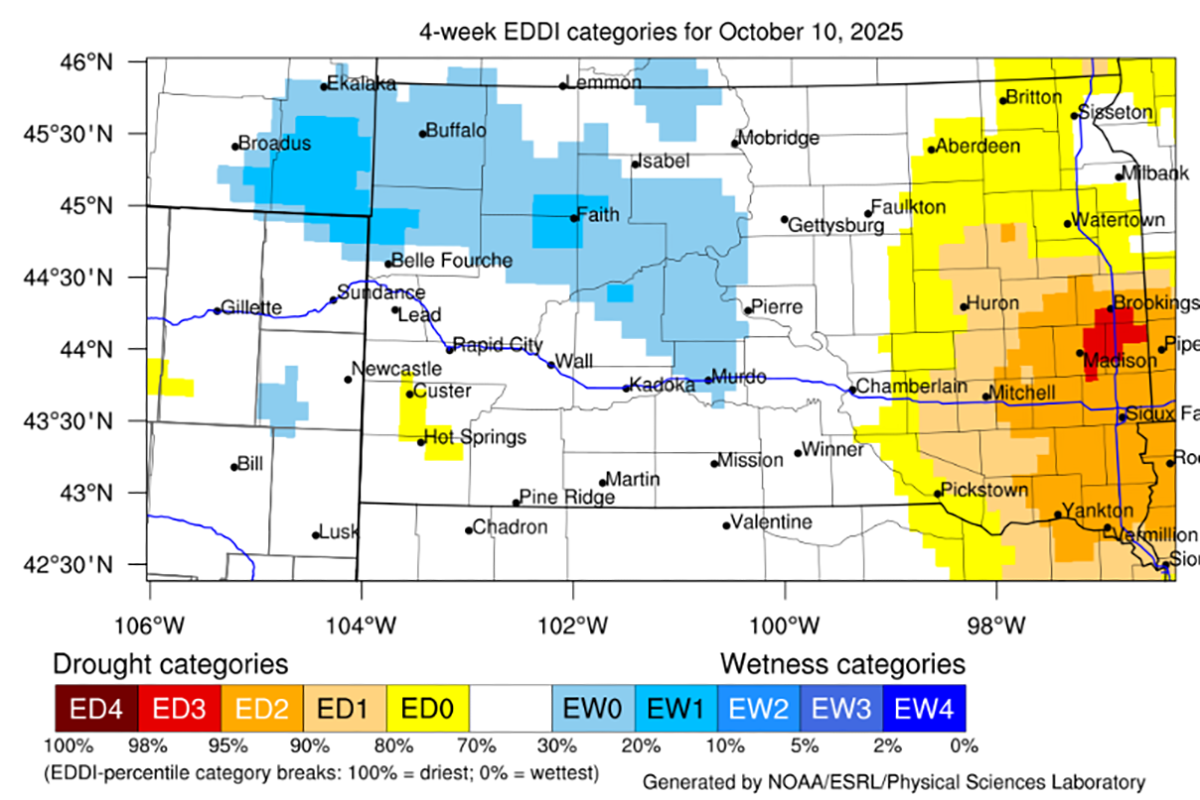
Understanding the Importance of Fall Precipitation and Soil Armor
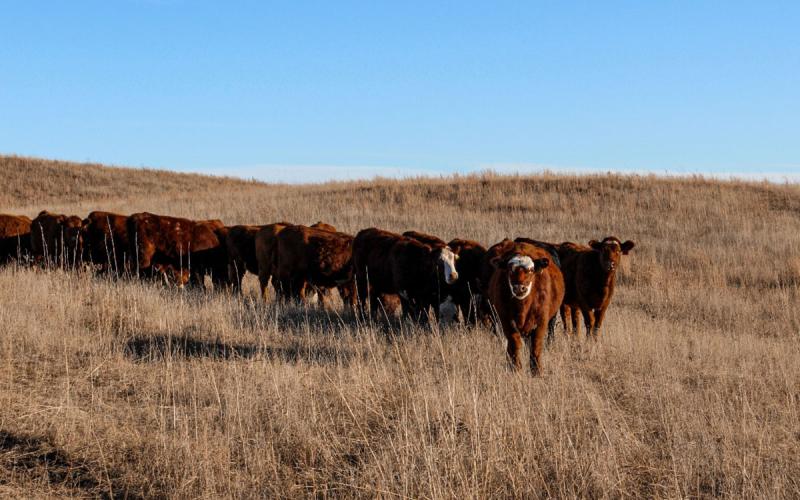
The new water year began on October 1st, 2025, which means it’s a good time to reflect on precipitation events of the previous year and begin looking ahead to the dormant season. The water year begins in October because of how impactful dormant precipitation is for recharging soil moisture and kickstarting plant growth conditions in the spring.
It is very important to have some pasture recovery before dormancy occurs, or at least to leave behind enough standing forage and soil surface armor to protect the soil. Healthy soil provides the foundation for robust pasture landscapes. Keeping the soil surface covered with enough plant material will reduce erosion potential, absorb and store moisture, as well as provide an insulation layer to protect soil microbes and organic material for them to break down.
What Are the Current Climate Outlooks Predicting?
Looking ahead to winter, the outlooks currently average chances of precipitation (Figure 3) and temperature (Figure 4) for the next three months in South Dakota. Although there is a slight chance for above average seasonal precipitation in the northwest part of the state. As we move into the start of a new year, it will be important to keep an eye on these forecasts.
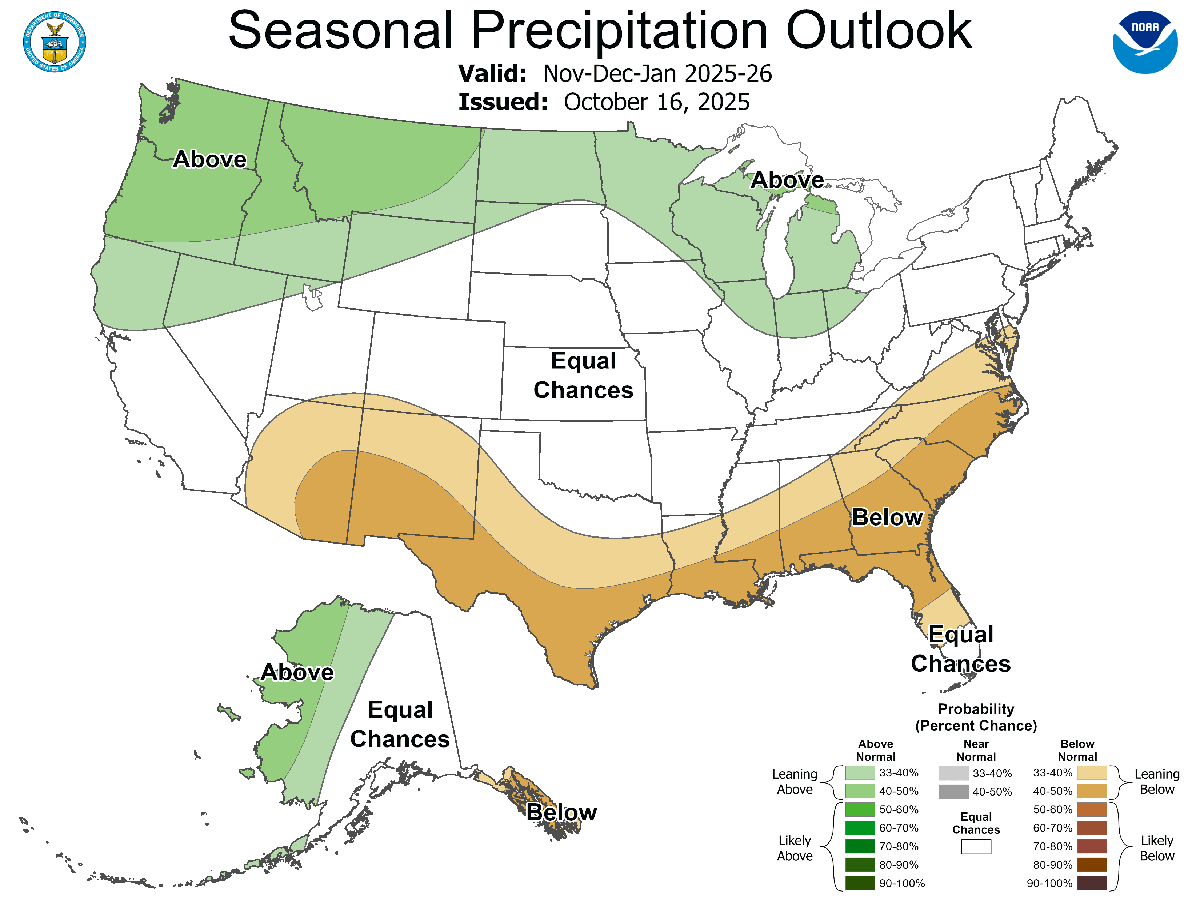
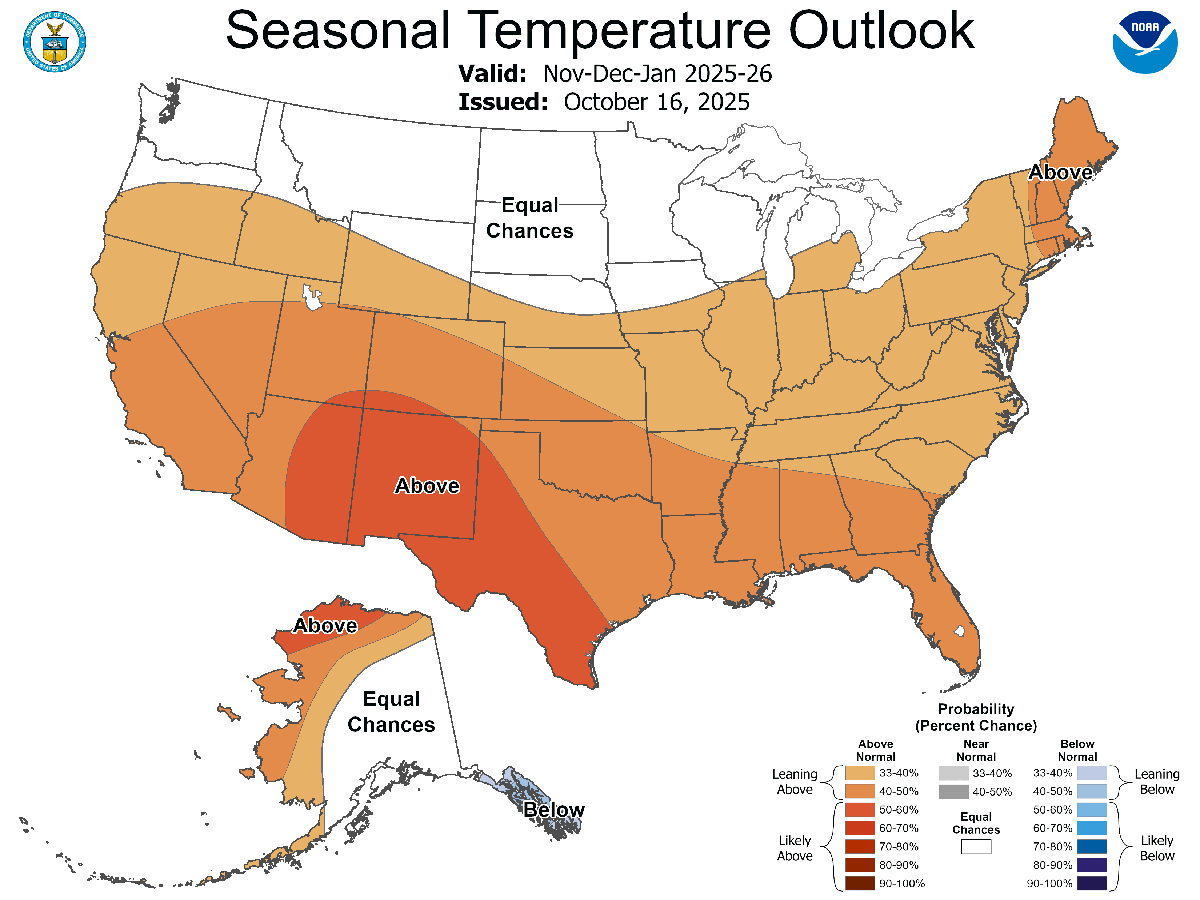
What Are Your Plans for Winter?
The beginning of a new water year and the start of fall is a great trigger date to investigate the following questions:
Moisture/Climate
- How much precipitation was received:
- During the 2025 water year? (October 1, 2024 through October 1, 2025)
- During this calendar year? (January 1, 2025)
- During this year’s growing season? (beginning April 1, 2025)
- Are there chances of precipitation in the upcoming weeks?
- What are current weather outlooks predicting in the coming days, weeks, and months?
- What are current drought conditions in your area?
- How much soil moisture exists now?
Forage
- What is the current condition of your pastures?
- How much standing forage exists?
- How much soil cover exists?
- How much recovery has occurred since the last grazing event?
- How much forage production did you have this year? (Above, below, or average)
- Do you plan to graze stockpiled dormant pasture?
- What are your current feed resources for the dormant season? (Stockpiled grazing, harvested forage, hay, silage, cubes, etc.)
- What are the feed markets indicating? Is it a good time to lay in extra supply?
- Are there alternative grazing resources you could take advantage of? (Winter grazing your stockpiled pasture, grazing cover crops, grazing corn residue, etc.)
Livestock
- What are your cow body conditions? (Are they thin or fleshy? Are they gaining weight or losing?)
- If cows are thin, do you have a nutritional plan to improve body condition before calving?
- What are the cattle markets indicating? Can you take advantage of high prices with strategic culling?
- What is your culling / destocking strategy? Do you know which animals will be the first to go?
Considerations for the Dormant Season Grazing Ahead
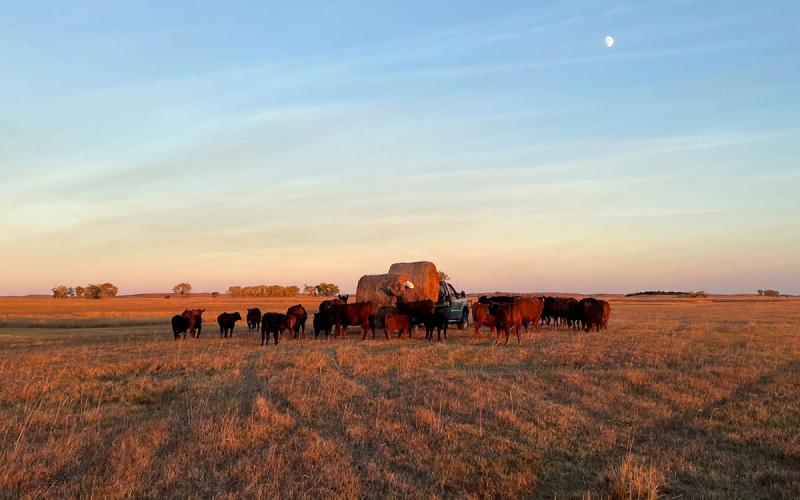
The greatest sum for most livestock operation budgets is simply keeping the cows fed. Cost of feeding further increase in the winter, due to the need to provide more harvested forages and supplementation. Finding ways to reduce feed costs without sacrificing performance, will improve the financial sustainability of the operation. That’s why fall is a great time to consider alternative grazing strategies on cropland. Once the cash crop is out of the ground, livestock often have access to high nutrient quality cover crops or low-cost crop residue to graze.
As a result of timely rains across the state, it is likely that many pastures were able to experience adequate recovery and substantial growth as we near the dormant season. Winter grazing of this stockpiled grass can help extend the grazing season and reduce the amount of hay required. Although dormant grasses are lower quality and you will likely still need to provide a protein supplement to ensure cows are meeting their nutritional requirements as they advance in gestation.
“As a reminder, it can be easy to lean back and enjoy the ‘good times’ while precipitation is plentiful, and cattle markets are high. During times like these, it’s important to prioritize proactive management and strategic decision making. Often it is the decisions we make now which determines our success during the hard times.” – Kaylee Wheeler, SDSU Extension Range Field Specialist.
Helpful Resources
- Meeting Cow Requirements While Winter Grazing
- Protecting Your Pastures While Winter Grazing
- Increasing Adaptability With Alternative Grazing Strategies
- Gearing Up for the Grazing Season: Soil Health
- See the National Drought Mitigation Center (Ranch Planning) and Managing Drought Risk on the Ranch for a decision-making guide and example drought plans.
- For more information on climate and weather outlooks, contact SDSU State Climatologist, Laura Edwards, or visit the SD Mesonet website.
- For more information on pasture monitoring and drought planning, contact SDSU Extension Range and Natural Resources staff.
